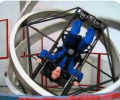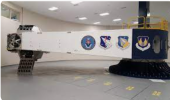FlyingProud
Member
- Joined
- Jun 14, 2022
- Messages
- 13
My son met with his NROTC advisor today. He was told he should improve his GPA if he wants to be a contender for a pilot slot. We understand that completely. He was also told he would need to shave a minute off his run time. He runs within Navy standards. So my question is: Is the run time really this important? Thank you on advance for any insight you might share.


